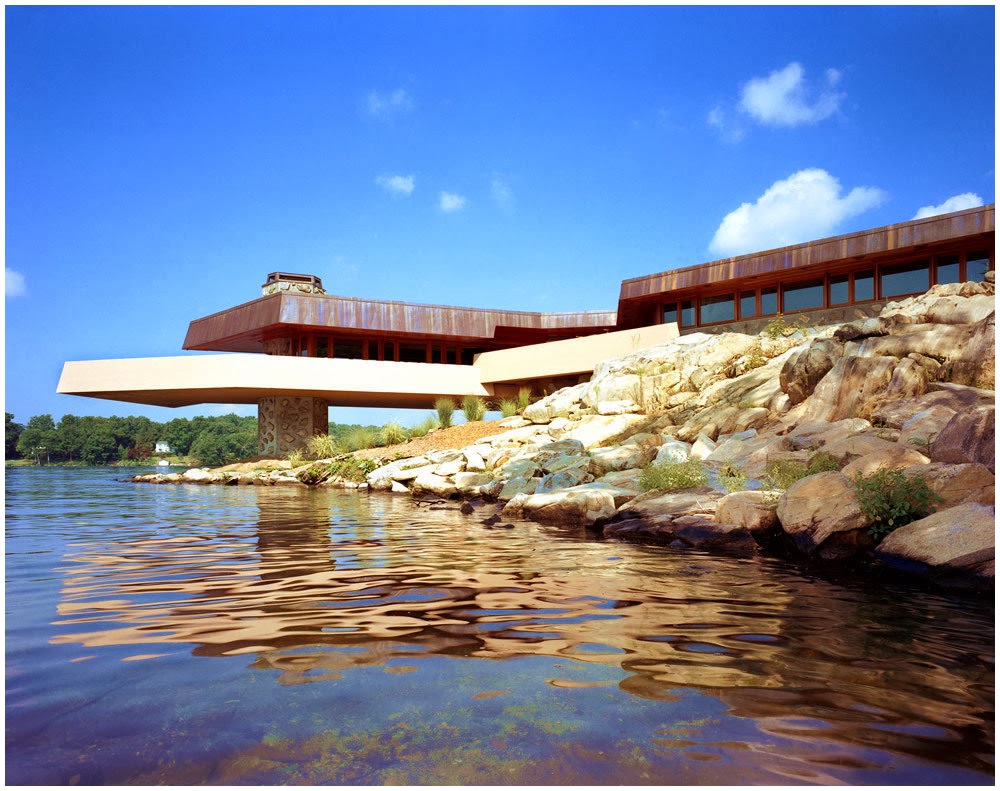10 Things Frank Lloyd Wright taught me
Frank Lloyd Wright was born on June 8, 1867. He is one of the most controversial, creative and inspiring architects. For me, Frank Lloyd Wright his Prairie Style (see terms below) was based on an “easy living” approach; a home for individuals. He believed we needed fewer, larger rooms which flowed more easily from one to the other. He also introduced the Textile Style, which led to the Organic Style and then the Usonian Style. One can say that Frank Lloyd Wright started the Green Building Principles with his belief that buildings should be made from the land and benefit the land.
1. Nature will always inspire:
“Study nature, love nature, stay close to nature. It will never fail you.”

2. The importance of open space, in design and in life:
“Space is the breath of art.”

3. Always design for the individual:
“There should be as many [styles] of houses as there are kinds … of people and as many differentiations as there are different individuals. A man who has individuality has a right to its expression and his own environment.”

4. Design and Nature should always be interconnected:
“No house should ever be on a hill or on anything. It should be of the hill. Belonging to it. Hill and house should live together each the happier for the other.
5. Architecture tells the story of the past, the way people lived, and how we’ve evolved and how we still grow:
“Architecture is life, or at least it is life itself taking form and therefore it is the truest record of life as it was lived in the world yesterday, as it is lived today or ever will be lived.”

6. Constant hard work and dedication will lead to success:
“A professional is one who does his best work when he feels the least like working.” And “I know the price of success: dedication, hard work, and an unremitting devotion to the things you want to see happen.”
7. Design is about balance:
“Less is more only when more is too much.”

8. Always strive to improve yourself through knowledge i.e. Evidence based design:
“Get the habit of analysis - analysis will in time enable synthesis to become your habit of mind.”
9. Believe in who you are and what you can achieve:
"The thing always happens that you really believe in; and the belief in a thing makes it happen."
10. Look for beauty in every aspect of your life:
"If you foolishly ignore beauty, you'll soon find yourself without it. Your life will be impoverished. But if you wisely invest in beauty, it will remain with you all the days of your life."
So long Frank Lloyd Wright
“Architects may come and architects may go
And never change your point of view
When I run dry, I stop awhile and think of you”
Terminology:
Prairie Style:
Prairie houses and other buildings were generally two-story structures with single-story wings. They utilized horizontal lines, ribbon windows, gently sloping roofs, suppressed, heavy-set chimneys, overhangs, and sequestered gardens.
Textile Style:
Frank Lloyd Wright used the most basic material in building (concrete) to imitate textile designs.
Organic Style:
As with Falling Waters and most of Frank Lloyd Wright better know projects this style of architecture refers to the promotion of harmony between human habitation (houses, museums etc) and nature.
Usonian Style:
Usonian Homes were typically small, single-story L-shaped houses without a garage or much storage. These L-shaped houses were designed to fit around a garden terrace on an unusual and inexpensive site. Constructed with native materials, flat roofs and large cantilevered overhangs to help with natural heating and cooling, as well as introducing natural light with clerestory windows. There is s strong visual connection between the interior and exterior spaces in all Usonian homes.
For more info on the Duncan House please visit http://www.polymathpark.com/








